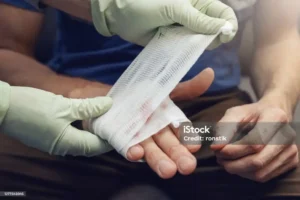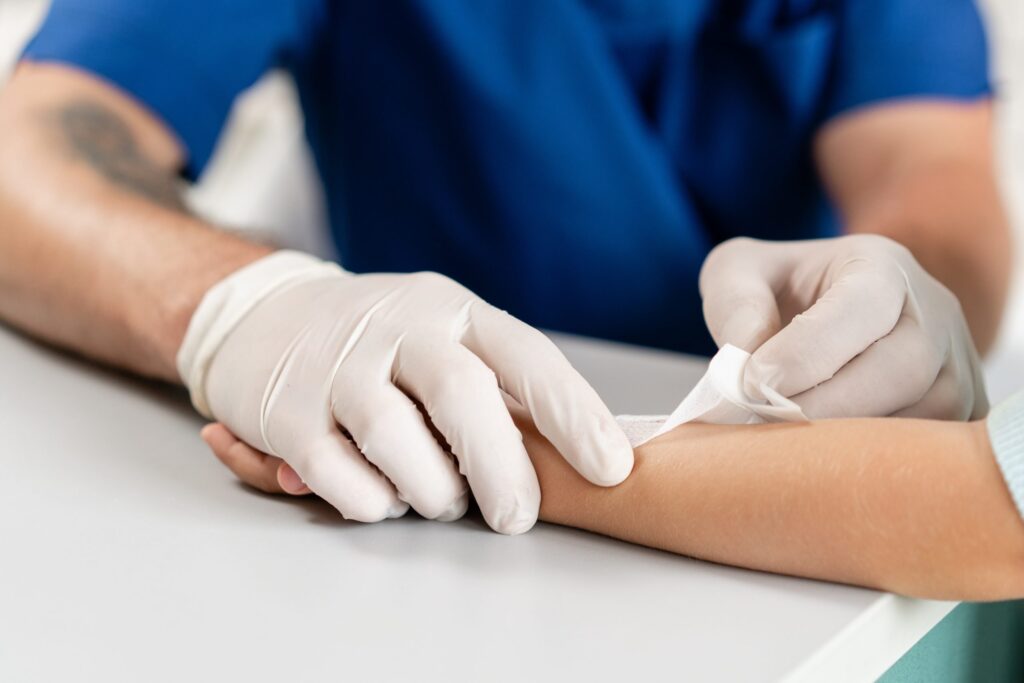Wound debridement is an important part of healing for certain types of injuries. It involves removing dead or damaged tissue to allow healthy tissue to grow.
This process helps prevent infections and supports faster recovery. Wound care specialists are trained to assess and choose the safest method for debriding a wound.
Whether the wound is caused by an accident, surgery, or a chronic condition, debridement plays a vital role in cleaning it and promoting healing.
Understanding this procedure can ease concerns and help patients feel more prepared for their care. This blog post will explore the purpose, methods, and expectations of wound debridement.
Why Is Wound Debridement Important for Healing?
Chronic wounds, such as diabetic ulcers or pressure sores, can struggle to heal if they’re contaminated with dead tissue, bacteria, or other obstacles. This is where debridement comes in—it clears out damaged or infected tissue, creating a cleaner wound bed that promotes the growth of healthy tissue.
Several benefits of wound debridement include:
- Reduced Infection Risks: Removing necrotic (dead) tissue minimizes the breeding ground for harmful bacteria.
- Accelerated Healing: Fresh, healthy tissue helps wounds close faster.
- Improved Wound Assessment: Clearing away debris allows healthcare providers to examine the wound better and create tailored care plans.
If searching for “wound care specialist near me” brought you here, you’ve likely realized that proper debridement performed by professionals plays a crucial role in healing.
Methods of Wound Debridement
There’s no one-size-fits-all approach to debriding a wound. Healthcare providers use different methods based on the wound type, severity, and patient’s overall health. Here’s an overview of the most common methods, along with their advantages and drawbacks:
1. Sharp Debridement
Performed using scalpels, scissors, or other surgical tools, sharp debridement is often the go-to method when quick removal of dead tissue is needed.
- Pros: Fast and effective for complex wounds.
- Cons: May cause discomfort and require local or general anesthesia.
2. Mechanical Debridement
This method involves physical techniques like wet-to-dry dressings or hydrotherapy. It’s commonly used for highly exudative (oozing) wounds.
- Pros: Accessible and straightforward.
- Cons: Can damage surrounding healthy tissue and may cause pain.
3. Enzymatic Debridement
Using topical medications, enzymes digest dead tissue while leaving healthy tissue intact.
- Pros: Minimally invasive and preserves healthy tissue.
- Cons: Slower compared to sharp or surgical methods.
4. Autolytic Debridement
The gentlest method, autolytic debridement relies on the body’s natural enzymes and moisture to break down dead tissue. This is typically done by applying specialized dressings.
- Pros: Painless and suitable for patients unable to tolerate more aggressive techniques.
- Cons: Time-consuming and not recommended for infected wounds.
5. Surgical Debridement
A more in-depth intervention performed in an operating room. Reserved for severe cases or infected wounds that need extensive cleaning.
- Pros: Thorough and ideal for life-threatening infections.
- Cons: Requires anesthesia and carries surgical risks.
What to Expect During Wound Debridement
Understanding the process can alleviate some of the anxiety of undergoing wound debridement. Here’s a breakdown of what typically happens:
Before the Procedure
- Assessment: Your clinician will examine your wound and determine the most appropriate debridement method.
- Preparation: Depending on the complexity, local anesthesia or sedation may be used for comfort.
- Pain Management Plan: For discomfort during or after the procedure, you’ll likely be given pain-relief options like medication or topical anesthetics.
During the Procedure
- The healthcare professional will remove dead or infected tissue using the specific method selected (e.g., sharp, enzymatic, or autolytic).
- The wound area may be cleaned with saline or antiseptic solutions during and after the procedure.
After the Procedure
- Follow-Up Care: Expect specific instructions for dressing changes, cleansing, and protecting the wound.
- Healing: You may notice redness or mild discomfort initially, which typically subsides as healing progresses.
- Monitoring: Regular check-ins with your healthcare provider will ensure the wound continues to heal as expected.
Potential Risks and Complications
While wound debridement is generally safe when performed by trained professionals, being aware of potential complications ensures you’re better prepared.
- Pain or Discomfort: Temporary pain during and after debridement is common but manageable.
- Bleeding: Minor bleeding during tissue removal is typical, though excessive bleeding is rare in non-surgical methods.
- Infection: There’s a slight risk of new infections, which is why post-care and protection are crucial.
- Damage to Healthy Tissue: Mechanical or sharp debridement, if done incorrectly, could potentially harm surrounding healthy tissue.
Alert your provider immediately if you experience any unusual symptoms, such as increased swelling, fever, or a foul odor from the wound.
Why You Need a Wound Care Specialist
Many patients wonder if wound debridement can be handled at home. The short answer? No. Wound debridement is a delicate and critical process best left to medical professionals.
Here’s why seeking help from a wound care specialist is essential:
- Expertise: Specialists are trained to identify the best method for your wound type.
- Safety: They ensure the procedure is done efficiently while minimizing risks.
- Comprehensive Care: From debridement through to healing, they’ll provide step-by-step guidance to help you recover faster.
If you’ve been searching online for a “wound care specialist near me,” now’s the time to connect with one to ensure your wound receives the attention it deserves.
Seeking the Best Outcome for Your Chronic Wounds
Wound debridement is not just a medical term—it’s a critical step in healing chronic wounds. Whether through sharp methods for immediate relief or gentler techniques like autolytic debridement, removing damaged tissue can pave the way for faster, healthier recovery.
If you or a loved one lives with a chronic wound, don’t wait to seek help. Reach out to a healthcare professional to take the first step toward healing.
Addressing these wounds promptly not only improves your physical health but also helps restore your quality of life.



